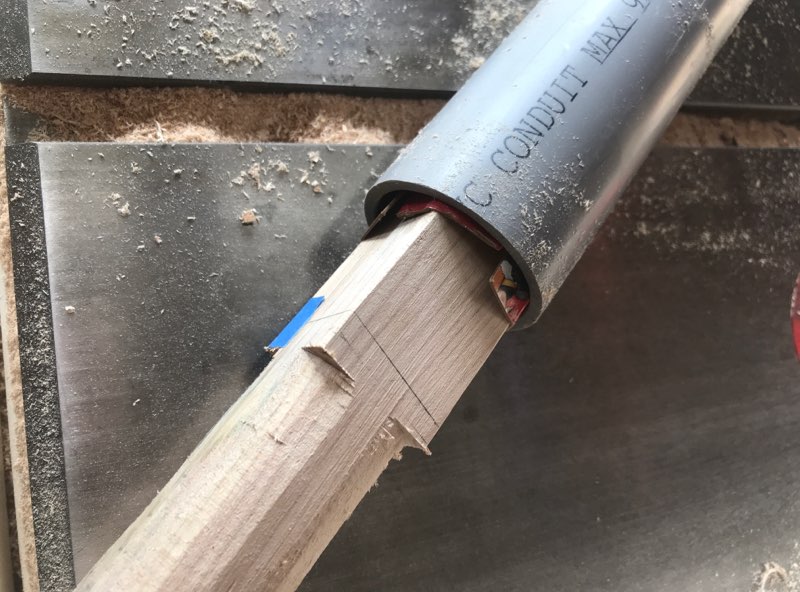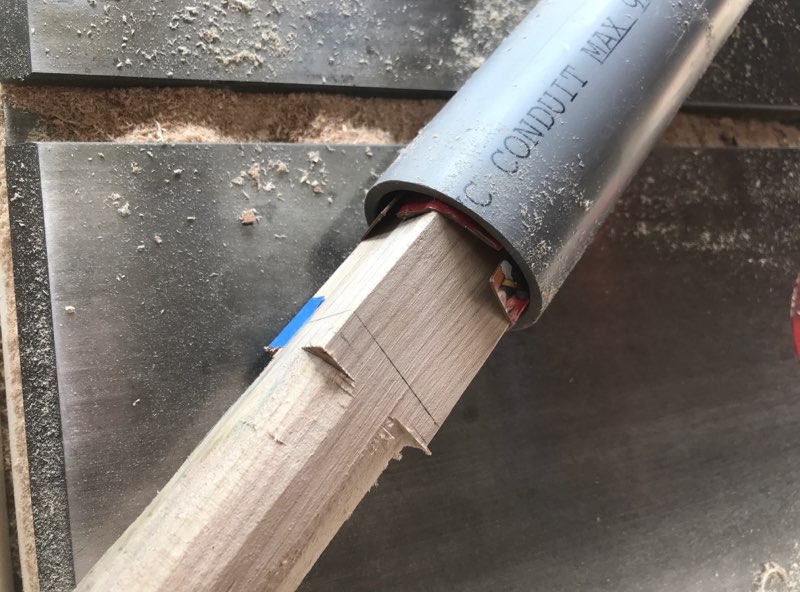So, you might be wondering, “What to do if you don’t have a lathe?” Well, fear not, my young DIY enthusiast! While having a lathe is undoubtedly handy for woodworking and metalworking projects, there are plenty of creative alternatives you can use if you don’t have one at your disposal. In this article, we’ll explore some innovative solutions that will help you achieve similar results without the need for this specific tool. Let’s dive in and discover the exciting possibilities!
Whether you’re a budding engineer, an artistic crafter, or simply enjoy building things with your own hands, not having a lathe shouldn’t hold you back. There are numerous ingenious workarounds for creating cylindrical or rounded shapes, even if you don’t have the luxury of a lathe. With some unconventional techniques and a dash of resourcefulness, you’ll be amazed at what you can accomplish!
No lathe? No problem! We’ll unveil some unconventional methods like hand carving, using a drill, turning by hand, or even repurposing everyday objects to simulate the effects of a lathe. Together, we’ll explore the world of woodworking and metalworking from a different perspective, giving you the confidence to tackle projects even without traditional tools. So, let’s get ready to roll up our sleeves and dive into the realm of lathe-less creations!

What to Do If You Don’t Have a Lathe: Innovative Alternatives
In the world of woodworking and metalworking, a lathe is an essential tool for shaping and carving materials. But what happens when you don’t have access to one? Don’t worry! There are several creative alternatives and techniques that can help you achieve similar results. In this article, we will explore innovative ways to work without a lathe, enabling you to bring your artistic visions to life.
Using a Drill Press as a Lathe
If you’re a woodworker or metalworker without a lathe, you may already have a drill press in your workshop. This versatile tool can be turned into a makeshift lathe by utilizing a few additional accessories. To get started, you’ll need a faceplate or chuck that can be attached to the drill press table. Secure your workpiece to the faceplate and set the drill press to a low speed. You can then use various turning tools, such as chisels or gouges, to shape the material as desired.
Benefits of Using a Drill Press as a Lathe
Using a drill press as an alternative to a lathe offers several advantages. Firstly, it allows you to utilize a tool that you may already have in your workshop, saving you money and space. Additionally, a drill press can provide a stable and consistent turning speed, ensuring precision in your work. Finally, this method allows for greater control and safety compared to using handheld tools for shaping and carving.
Tips for Using a Drill Press as a Lathe
When using a drill press as a lathe, it’s important to follow these tips for optimal results and safety:
- Always wear safety goggles and protective clothing.
- Ensure your workpiece is securely fastened to the faceplate or chuck.
- Start with a low turning speed and gradually increase as needed.
- Keep your cutting tools sharp and properly maintained.
- Take frequent breaks to avoid overheating the drill press motor.
Handheld Alternatives: Creating Unique Designs
If you don’t have a lathe or a drill press, don’t fret! There are still ways to achieve beautiful and intricate designs using handheld tools. One such technique is known as off-center turning. This involves intentionally positioning the workpiece off-center and then using various handheld tools to carve and shape the material as it spins. The result is a visually striking piece with unique patterns and textures.
Benefits of Handheld Alternatives
While handheld alternatives may require more skill and precision, they offer a range of benefits:
- Creativity: Handheld alternatives allow for more artistic freedom, as you can experiment with different angles and techniques.
- Portability: You can work on intricate designs even in compact spaces, as handheld tools are easier to maneuver.
- Affordability: Handheld tools are generally more affordable than larger machinery like lathes, making them a budget-friendly option.
Tips for Handheld Alternatives
When using handheld tools as an alternative to a lathe, keep the following tips in mind:
- Secure your workpiece with clamps or a vice to ensure stability.
- Start with light cuts and gradually increase pressure as you gain confidence and control.
- Experiment with different angles, speeds, and tools to create unique textures and designs.
- Take breaks and rest your hands to avoid fatigue and maintain accuracy.
Creating a DIY Lathe: Turning Everyday Objects
If you’re feeling particularly resourceful, you can even create your own DIY lathe using everyday objects. One popular method involves repurposing an old electric motor and attaching it to a sturdy frame or workbench. Combine this with a pulley system and a belt to create a spinning platform for your workpiece. While this DIY setup may require more time and effort, it can be a rewarding and cost-effective solution for those without access to a lathe.
Benefits of a DIY Lathe
Building your own lathe from scratch offers several advantages:
- Creativity: You have the freedom to design and customize your lathe to fit your specific needs and workspace.
- Satisfaction: Building a functional tool with your own hands can be incredibly fulfilling and empowering.
- Cost-Effective: Instead of purchasing an expensive lathe, opting for a DIY solution can save you money.
Tips for Creating a DIY Lathe
If you decide to build your own lathe, keep these tips in mind:
- Research and plan your design before starting to ensure all necessary components are included.
- Use high-quality materials that can withstand the force and speed required for turning.
- Take your time and follow instructions carefully to ensure safety and functionality.
- Regularly inspect and maintain your DIY lathe to ensure optimal performance and longevity.
Conclusion
Not having access to a lathe doesn’t mean you can’t pursue your woodworking or metalworking dreams. Whether you utilize a drill press, handheld tools, or create your own DIY lathe, there are plenty of alternatives available. Experiment, be creative, and embrace the possibilities at your disposal. With a little ingenuity and determination, you can achieve impressive results and bring your artistic visions to life.
Key Takeaways
- 1. You can use alternative tools like a drill or a router to accomplish similar tasks as a lathe.
- 2. Carving and shaping wood by hand can be a viable option if you don’t have a lathe.
- 3. Consider using a wood lathe attachment for a drill press if you already have one.
- 4. Look for local woodworking shops or makerspaces where you can use a lathe on a rental basis.
- 5. Explore online marketplaces for used lathes at affordable prices.
Frequently Asked Questions
When it comes to woodworking, not having a lathe might seem like a setback. However, there are still plenty of options available for those who don’t have access to one. Below are some common questions and answers to help you navigate the world of woodworking without a lathe.
1. How can I turn wood without a lathe?
If you don’t have a lathe, you can still create cylindrical shapes by using hand tools such as chisels, rasps, and files. Carving the wood with these tools allows you to shape the material and create decorative pieces. Another method is to use a handheld rotary tool with attachments like sanding drums or cutting discs. This approach allows for more precision and control compared to traditional hand tools.
Additionally, you can explore alternative methods like using a drill press to hold your workpiece in place as you shape it with sandpaper or other attachments. It may require some creativity and experimentation, but you can achieve similar results without a lathe.
2. What are some alternatives to a lathe for making round objects?
If you don’t have a lathe, there are several alternatives you can consider for making round objects. One option is using a wood lathe attachment for your drill press. This attachment allows you to turn wood using the rotational power of your drill press, giving you the ability to shape cylindrical objects.
Another alternative is the use of a DIY lathe setup, such as a pole lathe or a treadle lathe. These setups utilize foot-powered or hand-powered mechanisms to rotate the workpiece while you shape it with hand tools. While these methods require more effort and skill, they can be effective alternatives to a traditional lathe.
3. Can a router be used as a lathe substitute?
Yes, a router can be used as a lathe substitute to some extent. By attaching a roundover bit or a similar shaping bit to the router, you can shape the wood while it spins on a makeshift jig or pivot point. This technique allows you to create round or cylindrical shapes, but keep in mind that it may have limitations compared to a dedicated lathe.
Using a router as a lathe substitute requires careful planning and securing the workpiece properly to ensure safety. Always follow safety guidelines and exercise caution when using power tools in unconventional ways.
4. Are there any other tools or techniques for turning wood without a lathe?
Yes, there are other tools and techniques you can use to turn wood without a lathe. One option is using a hand drill with specialized attachments like sanding drums or rotary burrs. This allows you to shape the wood by hand while maintaining control over the rotational movement.
Another technique is called “bowl carving.” This involves using carving tools and techniques to shape a wooden bowl or vessel by hand. While this method may require more time and practice, it can yield beautiful and unique results without the need for a lathe.
5. Can I achieve the same level of precision without a lathe?
While it may be challenging to achieve the exact level of precision that a lathe provides, it is still possible to create precise and well-crafted wooden pieces without one. The key lies in using sharp and high-quality hand tools, taking your time, and refining your techniques through practice.
By focusing on the details and paying attention to the grain direction, you can achieve impressive results even without a lathe. Remember that woodworking is both an art and a skill, and with patience and dedication, you can create beautiful pieces using alternative methods.

Wood Lathe Maintenance – DON’T Do These 6 Things Video
Summary
So, what can you do if you don’t have a lathe? Don’t worry, there are alternatives! First, you can try using a drill and sandpaper to shape and smooth your material. Second, a coping saw or a hacksaw can help you cut out shapes. Finally, if you need to turn a small item, a hand-held rotary tool with the appropriate accessories could be your solution. With these options, you can still create amazing projects without a lathe!
In conclusion, while having a lathe is convenient, it’s not the only way to get creative with wood or metal. With simple tools like a drill, sandpaper, coping saw, hacksaw, or a hand-held rotary tool, you can still enjoy crafting and shaping materials to bring your ideas to life. So don’t let the absence of a lathe stop you from pursuing your passion for making things!
